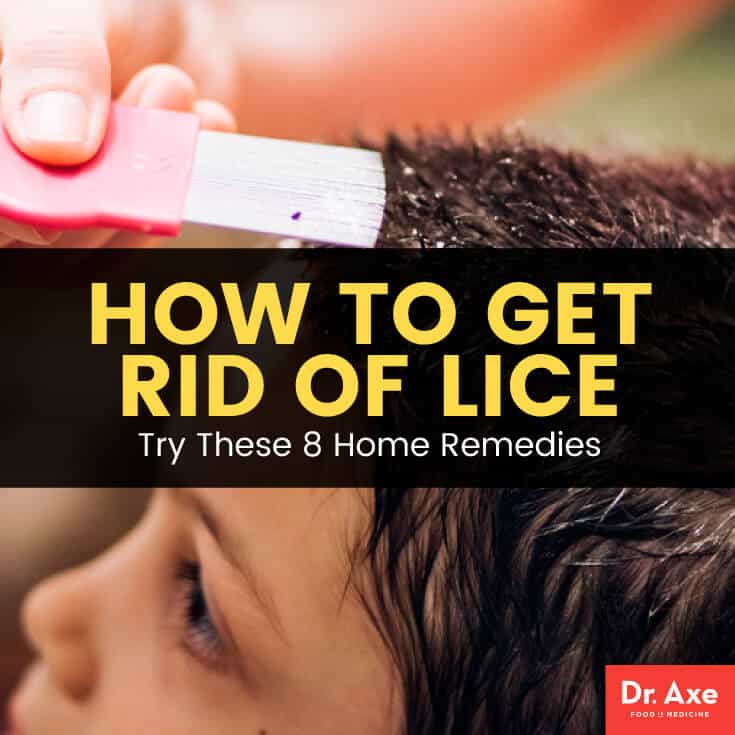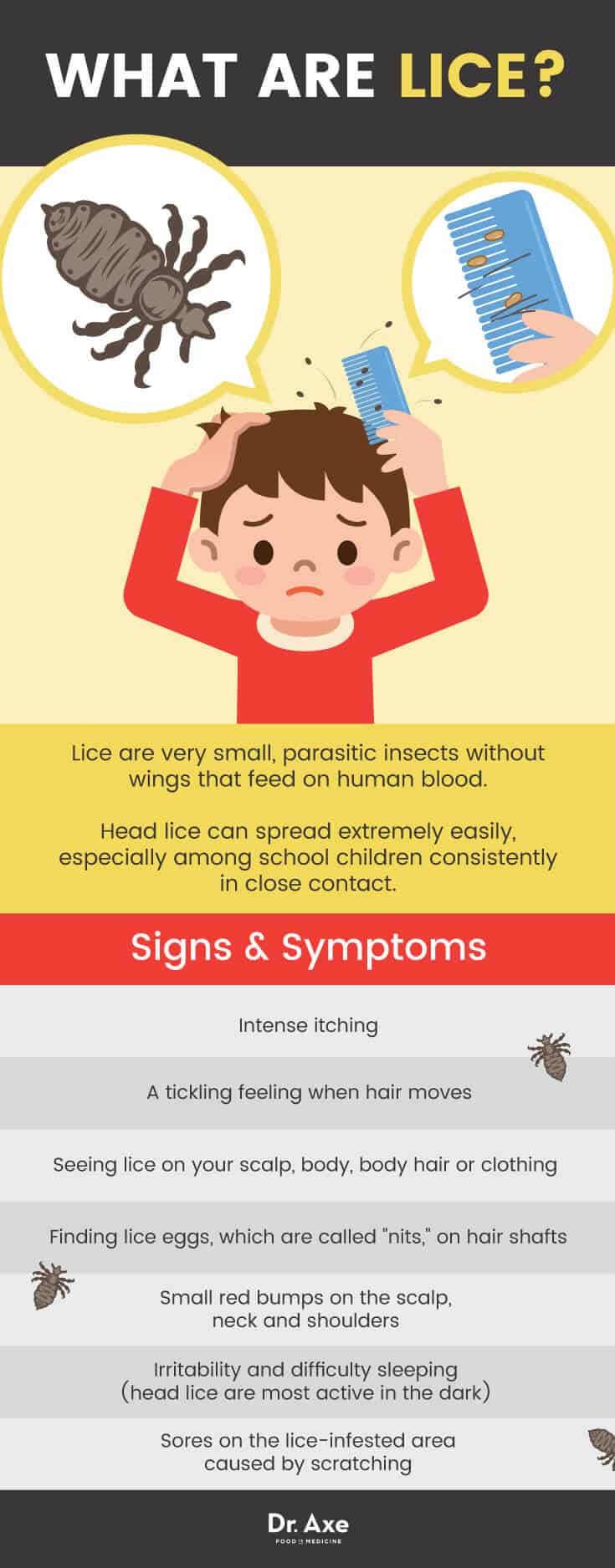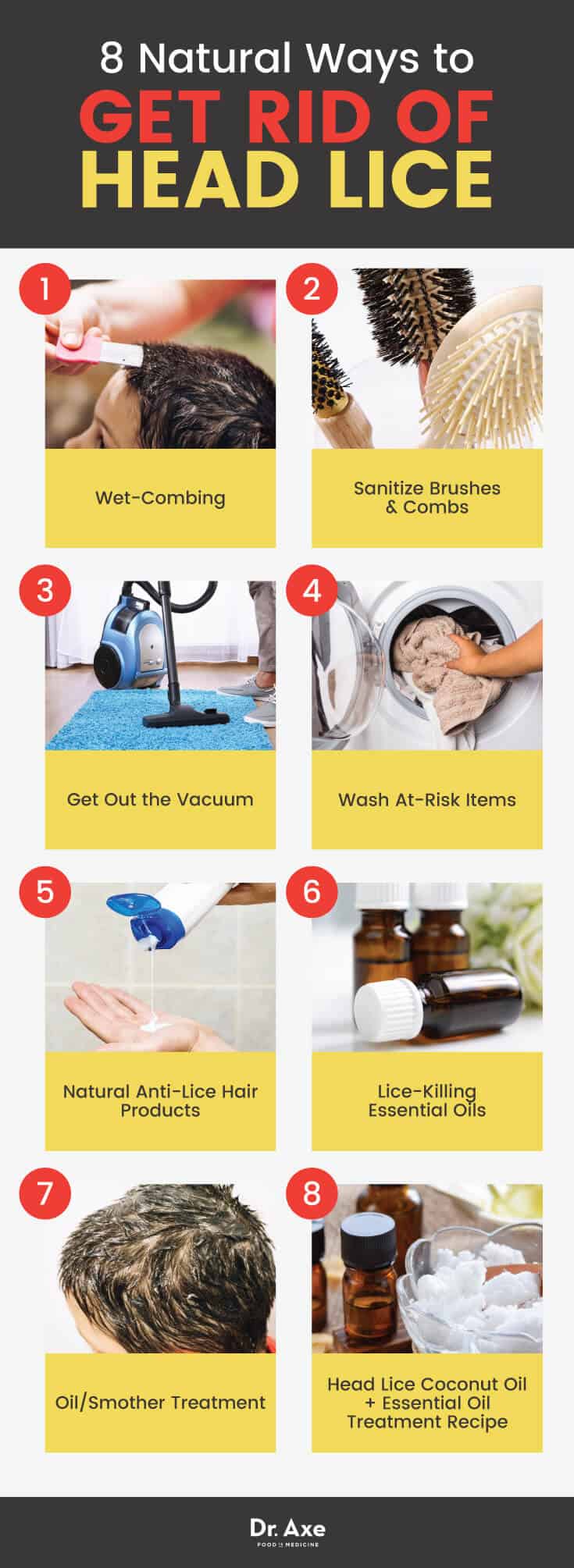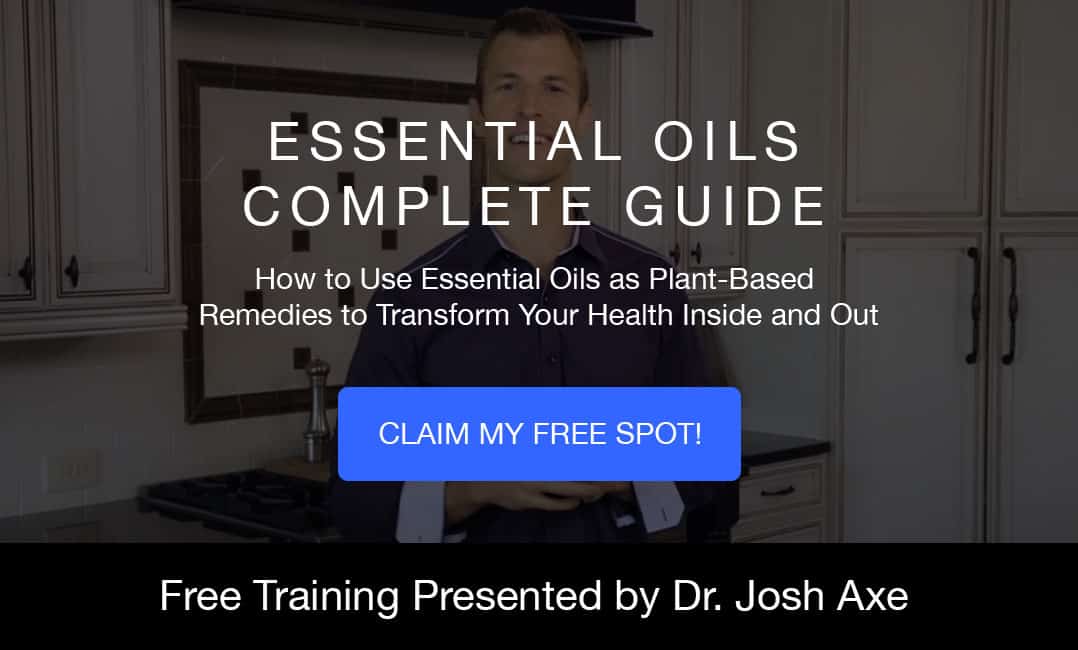
If you’re wondering how to get rid of lice, I’m here to tell you that there are thankfully a lot of natural home remedies to kill lice. There are a few kinds of lice including head lice, body lice and pubic lice. While body lice and pubic lice can occur as a result of unclean living conditions and a lack of personal hygiene, head lice can happen to anyone, even the cleanest amongst us.
The CDC estimates that somewhere between six to 12 million head lice infestations happen every year among kids aged three to 11 years of age. In the United States, you’ll find the majority of head lice cases occurring in preschool and elementary school children and the people they live with. The good news is that head lice don’t carry or spread disease. But they will have their victims scratching their heads so intensely that a secondary bacterial infection can occur. This is why at the first sign of head lice, you want to spring into action to get the lice out of your or your loved one’s head, decontaminate your home and belongings, and make sure that no one else in your home gets this annoying parasitic attack. (1)
Let’s look at exactly what is lice, how to get rid of lice, and most importantly, what are the best approaches to natural head lice treatment, including the best lice-fighting essential oils.
What Are Lice?
What does lice look like? Lice are very small, parasitic insects without wings that feed on human blood. Adult head lice are are only about two to three millimeters in length. Since they don’t have wings, they don’t fly and they also don’t hop. Lice get around by crawling (this is probably making you scratch your head already, sorry!). (2)
There are a few different kinds of lice: (3)
- Head lice (Pediculus humanus capitis): This type of lice develops on the scalp and neck. The lice actually attach their eggs to the base of the hair shafts. So head lice always equates to lice in hair. Head lice is typically most obvious or visible at the nape of the neck and over the ears. An infestation with head lice is also called pediculosis.
- Body lice: These lice live in clothing and on bedding and move onto your skin to feed. Body lice most often affect people who aren’t able to bathe or launder clothing regularly, such as homeless or transient individuals.
- Pubic lice: Also called crabs, this variety of lice infestation occurs on the hair and skin of the pubic area. Less often it can occur on coarse body hair like that of the chest, eyebrows or eyelashes.
With head lice, the tiny lice actually attach their eggs, or nits, to the bottom of the hair shafts. These eggs can be difficult to see. They typically take about eight to nine days to hatch. The eggs that are most likely to hatch tend to be a quarter inch or less from where your hair comes out of the scalp. The eggs that are more than a quarter inch from the base of the hair shaft are likely to have already hatched, are dead or are empty casings. (4)
When you’re looking at how to get rid of lice, it’s important to kill both the lice and the lice eggs in order to be effective.

Lice Signs & Symptoms
If you’re wondering how to tell if you or a loved one currently has lice, these are some of the lice symptoms to be on the lookout for: (5)
- Intense itching
- A tickling feeling when hair moves.
- Seeing lice on your scalp, body, body hair or clothing.
- Finding lice eggs, which are called “nits,” on hair shafts.
- Small red bumps on the scalp, neck and shoulders.
- Irritability and difficulty sleeping (head lice are most active in the dark).
- Sores on the lice-infested area caused by scratching
So what do lice look like again? Full-grown adult lice are only around the size of a sesame seed or a little bigger. So, they can definitely be hard to spot. What about their eggs? Their egg, or nits, look similar to little pussy willow buds. They can appear yellow or white. Live nits also can appear to be the same color as the hair of the lice-infested person.
It’s important to note that lice eggs, or nits, are commonly confused with dandruff. So how do you tell the difference? While you can brush dandruff out of the hair, lice does not budge so easily and will remain in the hair/on the scalp. You might also mistake nits for scabs or droplets of hair spray.
Causes & Risk Factors
So how do you get lice? Head lice can spread extremely easily, especially among school children consistently in close contact. The number-one way that head lice spreads is through direct head-to-head contact with an infected individual. With kids, there are a lot of opportunities for this head-to-head contact on a regular basis.
It is uncommon, but the sharing of items that come in close contact with the head or body are also another way for head lice to make the rounds. This method of transmission can occur since lice crawl and lice eggs can be in hair that sheds and then the eggs hatch. Sharing combs and brushes is another way for head lice to spread. Other items that can carry and spread head lice include: barrettes, hair ribbons, hats, scarves, coats, sports uniforms, towels, blankets and stuffed animals. You can also pick up head lice by lying down on a carpet, couch, bed, pillow or blanket that a person with head lice recently spent time on. So there are many ways to pick up head lice. Thankfully, pets like dogs and cats cannot spread human lice. (6)
As I already said, head lice is not a sign that someone is dirty or not washing their hair enough. Truly anyone can get a case of head lice. But there are some groups that are more likely to contract lice. When it comes to lice risk factors, especially head lice, age is definitely a risk factor. Lice infestations are most common in young children, especially preschool and elementary school-age children. Head lice can happen to a child of any age, hair length or socioeconomic background. But, it’s more prevalent among girls than boys and it’s also more common in Caucasians than African-Americans. (7)
Now, it’s finally time to talk about how to get rid of lice. There are several conventional and natural options. And, actually, some of the natural options have even been shown to be more effective than the conventional ones.
Conventional Lice Treatment
To determine whether or not you have lice, your doctor is likely to look you over using a magnifying lens. Your doctor is also likely to employ a Wood’s light in his or her examination. This special type of light helps the doctor check for nits because it makes them appear pale blue in color. This makes them much easier to be spotted.
Do you know how to get rid of lice the conventional way? Conventional lice treatment typically includes an over-the-counter (OTC) topical medication to kill off the lice and the lice eggs. However, these medications are known to not kill off recently-laid eggs. This is why a second treatment (often nine days later) is typically needed. If a second OTC treatment is not performed or not performed at the right time, then your doctor may suggest a stronger, prescription treatment. This prescription treatment comes with more serious side effects compared to OTC options. (8)
Examples of common OTC head lice treatment medications include permethrin (Nix) and pyrethrin with additives (Rid). Side effects of Nix can include burning, itching, numbness, rash, redness, stinging, swelling or tingling of the scalp. Pyrethrin’s additives increases its toxicity. Possible side effects of products like Rid include: skin irritation, skin rash, skin infection, sudden sneezing attacks, stuffy nose, runny nose, wheezing or difficulty breathing. (9, 10)
You should never use pyrethrin on a child with a chrysanthemum or ragweed allergy. Pyrethrin contains a chemical compound extracted from the chrysanthemum flower, a member of the ragweed family.

How to Get Rid of Lice: 8 Natural Remedies
The better and more thoroughly you treat an outbreak of lice, the less likely it is to become a recurring problem. Figuring out how to get rid of lice naturally takes some continuous effort, but so do conventional options. Plus when it comes to how to get rid of lice naturally, you may already have many of the ingredients you need on hand. Because of this, natural lice remedies can also be more cost-effective.
1. Wet-Combing
How to get rid of lice naturally pretty much always involves a fine tooth comb. Wet-combing is a natural lice remedy that you need to repeat every three to four days for a minimum of two weeks after you don’t see any lice present. How do you wet-comb for lice? The person with head lice needs to have their hair completely wet. It’s also a good idea to add some conditioner (ideally a natural anti-lice conditioner). Next, using a fine-tooth nit comb (available at stores and online for under five dollars) you need to comb the entire lice-infested scalp starting at the scalp to the hair ends. Conduct this careful combing at least two times during a session. (11)
It’s important to know that if your child has lice and is only two months of age or less, then you should not use any medicated lice treatment products. Also, you should only use your hands and a fine-tooth comb to remove the lice. For a child of this age, wet-combing, as I just described, is recommended every three to four days for three weeks after the sighting of the last live louse. (12)
2. Sanitize Brushes & Combs
When it comes to how to get rid of head lice, you definitely want to address the tools that have been used in a lice-ridden person’s hair, especially before and after wet-combing. So take all of the combs and brushes and wash them using very hot (130 degrees F at the lowest) water and soap. You can also soak the brushes and combs in rubbing alcohol for at least one hour. You can even do both the washing and the soaking if it makes you feel better. And to be on the safe side, include all the hair-styling tools in the household. Also include any and all objects that go into hair like barrettes, hair ties, headbands, etc.
3. Get Out the Vacuum
If you want to know how to get rid of lice naturally (or conventionally), you can’t focus only on the infected person and overlook their physical surroundings. Any good conventional or natural head lice treatment advice will include advising you to vacuum thoroughly and often during a lice outbreak and afterwards. You should give all of the floors and furniture in your home a good, thorough vacuuming. Vacuuming your furniture and floors can remove a lice-infested person’s hairs that could still have viable lice eggs attached and about to hatch. You also may want to cover furniture after vacuuming. You can use a plastic painter’s drop cloth to cover furniture for two weeks to prevent a reoccurrence of lice in your home. (13)
4. Wash At-Risk Items
When you learn someone in your household has lice, you need to do more than just treat the lice on the person. You also need to make sure that you wash any items that could be contaminated with lice. Not only will this help naturally treat the current lice outbreak, but it will also prevent transfer of lice to someone else or reinfestation of the same person.
What are some of the items in your home you should make sure to wash? I’m talking about clothing, bedding, blankets (not just in the bedroom) and stuffed animals. To ensure that you thoroughly de-lice these various items, make sure that you wash them in soapy water that is very hot (at least 130 degrees F). Dry them at a high heat setting until thoroughly dry, with a minimum dry time of 20 minutes. If you have anything that you can’t wash, but you think could possibly be contaminated, you can seal these things in an airtight bag for at least two weeks. (14)
5. Natural Anti-Lice Hair Products
The hair products you choose for yourself and your children can contribute significantly to your efforts when it comes to how to get rid of lice naturally. There are natural options for anti-lice shampoo, conditioner and conditioning hair sprays on the market today. I recommend finding natural anti-lice hair products that score well on EWG’s Skin Deep® Cosmetic Database and using them as part of your lice treatment and prevention plan.
6. Lice-Killing Essential Oils
According to Mayo Clinic, clinical studies have demonstrated that some specific essential oils can have a toxic effect on lice and lice eggs. Some of top choices for anti-lice essential oils include tea tree essential oil, anise essential oil and ylang ylang essential oil. (15) Lavender and eucalyptus essential oils also have been shown to be effective.
A 2010 study found that a topical lotion that contained 10 percent tea tree oil and one percent lavender oil resulted in a 97.6 percent elimination of lice after the final day of treatment. Meanwhile, only 25 percent of study subjects using a common conventional lice treatment containing pyrethrins and piperonyl butoxide got rid of their head lice. (16)
You can combine these lice-killing essentials oils with coconut oil for a natural anti-lice treatment. A study published in the European Journal of Pediatrics revealed that a combination of coconut oil and anise spray was a more effective natural alternative to permethrin lotion, a commonly prescribed lice treatment. While 82 percent of study subjects had success with the coconut anise mixture, only 42 percent of the permethrin users had relief. (17)
Yet another study published in the Israel Medical Association Journal found even greater success using a combination that included coconut oil, anise oil and ylang ylang oil. This mixture was applied for 15 minutes at a time three times at five day intervals. This natural lice treatment was successful in 92.3 percent of the children and caused no serious side effects. (18)
7. Oil/Smother Treatment
Many natural lice treatment plans will recommend using food items like mayonnaise and butter to smother lice. These can work. But, I recommend using something a little less messy and a lot less offensive to your sense of smell. I’m talking about multi-purpose oils like almond, coconut and olive.
First, coat the hair in the oil of choice.You can put the oil on your hair and comb it through. Or you can try coating the comb and putting it through your hair. Just choose whatever works best and gets your scalp and hair completely coated. Using hair clips, you may want to separate the hair into more manageable sections. Make sure to do this under good lighting. Rinse the comb frequently under very hot water as you’re working. Once you’ve combed out and coated all of the hair in oil, shampoo and rinse your child’s hair twice in a row. This approach is recommended every day for a week. For the two following weeks, continue to perform wet-combing (#1 on this list) every night to make sure the lice are all gone. (16)
8. Head Lice Coconut Oil + Essential Oil Treatment Recipe
Ingredients:
- 3 tablespoons coconut oil
- 1 teaspoon each of ylang ylang, anise and tea tree oils (can swap for other anti-lice oils according to what you have on hand/what agrees with you or your child)
- 2 cups apple cider vinegar
- 1 cup water
This should be enough for shoulder-length hair, but double the recipe for longer hair.
Directions:
- Apply the solution all over the scalp, massage in well and pull it through the ends.
- Comb through the hair with a fine tooth comb.
- Cover head in a shower cap and allow to sit for 2 hours. If possible, sit in the sun or use a hair dryer to periodically warm up the cap.
- Carefully remove shower cap, and seal in a Ziploc® bag for disposal.
- Comb hair again before washing and rinsing thoroughly, twice.
- While hair is still wet, combine 2 cups of apple cider vinegar and 1 cup water in a small spray bottle. Saturate the hair, spraying ½ the bottle on the scalp and hair.
- Lean over the sink and pour the remaining mixture over the hair, massaging lightly.
- Rinse thoroughly and comb hair once again with a fine tooth comb.
- Follow with a light application of coconut oil. Style as desired and allow to remain on the hair until next washing.
As with most lice treatments, you need to repeat the process every 5 to 10 days for a couple of weeks. This helps to ensure that you eradicate all lice and their eggs. Between treatments, comb hair morning and night with a fine tooth comb, and use coconut oil as a leave-in conditioner. As coconut oil both repels and kills lice, at the first notification of a lice outbreak, start using coconut oil as a leave-in conditioner.
Precautions
Contact your health care provider if OTC or natural lice treatments do not work after two weeks or if there are signs of an infection. Symptoms of infection include pain, tenderness, redness, swelling, fever or sores that won’t heal. (17)
Never use an essential oil on your child before performing a patch test. Some children may have allergic reactions to essential oils, especially tea tree oil. If a patch test fails, then do not use that oil on your child.
You should not cover your furniture in plastic if you have a toddler. It’s possible for him or her to become tangled in the plastic sheet and suffocate.
Not only do I advise staying away from health-hazardous fumigants, the CDC also advises “Do not use fumigant sprays or fogs; they are not necessary to control head lice and can be toxic if inhaled or absorbed through the skin.” (18) You also should never use flammable products, like gasoline or kerosene, to kill lice or to remove lice eggs.
Final Thoughts
Any parent is likely to come in contact with lice at some point since young school-age children are the most likely candidates for lice. If your child has a friend with lice or is the lice carrier, don’t panic. All respectable sources will tell you that head lice does not mean that your child is dirty, your home is dirty or you don’t wash your child’s hair enough. It’s important to remember, whether it’s your child or yourself, that lice isn’t something to be embarrassed about. It can happen to anyone. Lice is simply a very common parasitic problem and there are so many natural ways to deal with lice.
Emotionally, it’s also important for a child to know that he or she didn’t do anything wrong and that the problem might not be gone overnight, but it will be gone soon! It is definitely key to be patient with lice treatments. Whether natural or conventional, they often need to be carried out for weeks and repeated at certain time intervals.
Read Next: Top 10 Eucalyptus Oil Uses and Benefits
If you feel like you could use some more in depth information on essential oils, Dr. Josh Axe is hosting a free webinar going over, in great detail, uses and tips for using essential oils. Click below to learn more.
